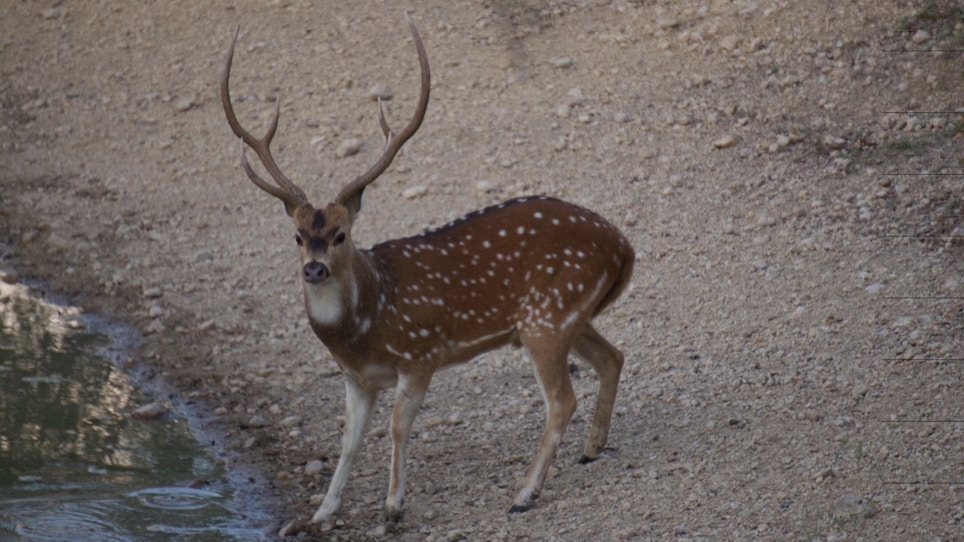I must admit, I was drawn to them by their magnificent coats and elk-like racks more than anything. The more I researched these incredible animals, the more my excitement level rose. It’s just habit for me – I simply have to learn more about the animals I plan to bowhunt, especially one I’ve never pursued before.
Here’s a little history lesson before we dive into why this species of deer was tailor-made for bowhunting.
The Axis Deer
The axis deer, or chital, is native to the Indian subcontinent. It's considered by many to be the most beautiful of the deer species. Its reddish coat, dotted with rows of white spots and a black strip down the length of the back of mature males, makes for a stunning sight. The racks of male axis are relatively simple, almost elk-like, and rarely have more than three points on each side.
Axis were first introduced into Texas in the 1930s and now, according to Texas Parks & Wildlife officials, can be found in at least 45 counties. The largest number of these grazers can be found in the famed Texas Hill Country, specifically in the southernmost unit of the Great Plains, the Edwards Plateau. Open spaces in this area combined with dry scrub forest vegetation and lack of deep soil make the area more suitable for grazing than for farming.
Males grow and cast antlers throughout the year. Most seem to be hard-horned during their primary rut of mid-May through August. Most biologists place the peak of the axis rut in June.
Time to Hunt
OK, enough on the history lesson. Here are five reasons why the axis deer is a must-bowhunt species.
- The Texas Parks & Wildlife Department (www.tpwd.texas.gov) labels these deer as exotics, meaning they can be hunted legally year-round. Talk about a way to extend your season. Perhaps best of all, if you're a non-resident all you need to chase these animals legally is a Special Hunting (Type 157) license. How can you beat that price? Yes, you can find plenty of ranches that offer free-range hunt options.
- Like elk, axis deer are extremely vocal during the rut. The males make a scary (especially if you were in the woods alone at night) type of bellow or roar. It’s easily distinguishable, and they do it often. During my hunt, it was not at all uncommon to hear between 50 and 100 different roars during the morning (from dawn to about 9 a.m.), and then again during the evening (from about 5 p.m. until dark). When a male is roaring, it’s possible to pinpoint his position and stalk him. We did this on a number of occasions and got bowhunting-close multiple times. It’s an amazing feeling.
- Much like a rutting whitetail, axis bucks seek estrous does and pursue them. If you have a hot doe in your area, you may see multiple bucks during a morning or evening sit. Because of the torrid late-May/June Texas temperatures, I opted to hunt from a treestand over a secluded waterhole. During my pair of sits on this waterhole, I watched three different bucks tail a hot doe to the water and saw three separate buck fights. It was just like hunting whitetails during the rut.
- Unlike whitetails and elk, axis deer are more active in daytime, with peak movement occurring during the first few hours of the morning and the last few hours of the evening. Told you these things were tailor-made for bowhunting!
- Lastly, axis is what beef should taste like. My wife and I specifically went on this hunt to bring home plenty of tasty meat. Most free-ranging hunt operations in Texas allow bowhunters to take a buck and a doe.






